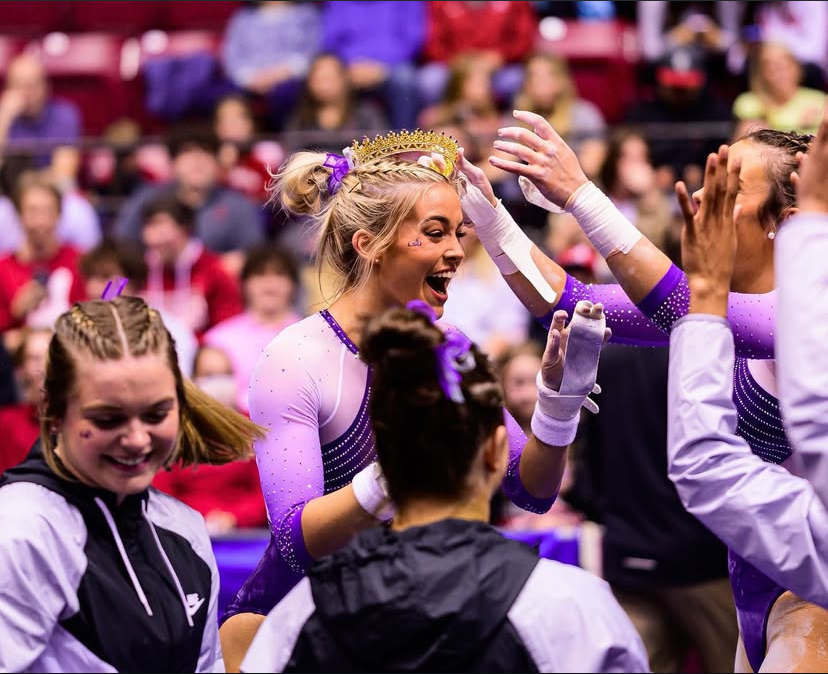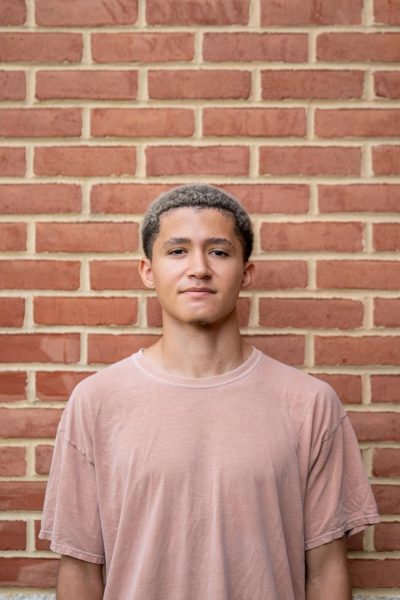The Washington Commanders went into the 2024 NFL draft needing to rebuild their team. Since last season, they traded away their starting quarterback, and got a new coaching staff, along with a new owner and general manager. The team had the second overall pick in the draft and needed to address their glaring need for a quarterback, along with the offensive line, cornerback and tight end. Here is the Black & White’s analysis of the Commanders’ first to third draft selections.
First round, No. 2: Jayden Daniels (QB, Louisiana State University)
Grade: B-
With the second overall pick in the 2024 NFL draft, the Washington Commanders selected Jayden Daniels. For months leading up to the draft, there was uncertainty about whom the Commanders would draft, but, as time went on it became clearer who the Commanders were predicted to select. Former University of North Carolina (UNC) quarterback Drake Maye was the early favorite to go second overall. Maye had a sub-par 2024 season compared to his electric 2023 season, but the Commanders opted to go with experience, drafting five-year quarterback Jayden Daniels. Daniels had the best season of his career last year, and he increased his draft stock when he won the 2023 Heisman trophy. With the Commanders hiring Offensive Coordinator Kliff Kingsbury, who has a history of developing mobile quarterbacks such as Caleb Williams and Kyler Murray, the selection fits the Commanders’ scheme well. Daniels is an older athlete than Maye, but his dual-threat ability separates him from the rest of the quarterbacks in his draft. Daniels spent about five years becoming a quarterback that NFL teams wanted at age 23, while it took Maye three years to become known as a generational talent at age 21. While both are inconsistent, Maye has more time to grow his game and learn than Daniels. The skill gap between the quarterbacks is not wide, but since Maye is significantly younger, this drops the grade for the pick.
Second round, No. 36: Jer’Zhan Newton (DT, University of Illinois Urbana-Champaign)
Grade: B-
The Commanders’ second-round pick came as a shock for most fans. The expectation was for the Commanders to select a cornerback or an offensive lineman, but they opted to pick a defensive tackle. With duo Daron Payne and Jonathan Allen leading the defensive line depth chart, it seemed like a wasted pick for the team to select another defensive lineman. Jer’Zhan Newton was regarded as a top-three defensive tackle in the draft, which helped some fans to sway their opinions about the pick, but it didn’t convince everybody. Jer’Zhan Newton is a generational player, but the team does have other needs that should’ve been addressed with this pick, lowering the grade for the selection.
Second round, No. 50: Mike Sainristil (CB, University of Michigan)
Grade: C
The Commanders opted to trade back in the fourth round making an exchange with their division rivals, the Philadelphia Eagles. The Commanders previously held the No. 40 overall pick this year and received the following picks: No. 50, 53, and 161st in exchange for the No. 40, 78, and 152nd selections from the Eagles. The Eagles used the Commanders’ former pick on cornerback Cooper DeJean. Cornerback was a position of need for the Commanders, so it’s safe to say not everyone was thrilled that the Commanders passed on DeJean. The Commanders instead turned the pick they received into selecting cornerback Mike Sainristil. Sainristil was not a prospect discussed leading up to the draft but was an impressive player at Michigan. Sainristil was a former receiver who transitioned to cornerback for his 2022 season. His skills led him to record six interceptions in 2023. Many scouts like Sainristil’s athleticism, but feel that he still needs more experience in the position. The Commanders lost the opportunity to draft one of the brightest college players in return for a shaky replacement, dropping the grade for their pick.
Second round, No. 53: Ben Sinnott (TE, Kansas State University)
Grade: C+
The Commanders added to their offense in the third round selecting Ben Sinnott. With the Las Vegas Raiders having drafted the No. 1 consensus tight end Brock Bowers in the first round, analysts thought the Commanders were going to select Ja’Tavion Sanders. However, the team would take Sinnott and Sanders would eventually fall to the fourth round. Sinnott adds value to the pass blocking and can handle running duties adequately. Although Sinnott needs improvement with his route running, he has the speed necessary to get separation from man coverage and gain yardage after the catch. Sinnott needs to develop stronger hands for pass-catching and reaction time when targeted. The grade for this pick is a “C+,” as the Commanders had the chance to select a more rounded tight end in Ja’Tavion Sanders.
Third round, No. 67: Brandon Coleman (G, Texas Christian University)
Grade: B
The Commanders waited until the third round to address their offensive line but added a reliable starter with the selection of Brandon Coleman. Coleman is an outstanding athlete with great arm length and flexibility. His pass-blocking techniques are sound but he seems to struggle with reaction speed. Coleman was listed as a guard but the Commanders currently have him listed as a tackle. With Nick Allegretti and Tyler Biadasz added to the interior, the Commanders draft some insurance.
Third round, No. 100: Luke McCaffrey (WR, Rice University)
Grade: B
Before the 2024 draft, the Commanders traded away their star pass-rusher Chase Young to the San Francisco 49ers in return for a third-round pick. The Commanders used this third-round pick to select Luke McCaffrey. McCaffrey is a household name for American football fans; Luke’s dad, Ed McCaffrey, is a Super Bowl champion and his brother, Christian McCaffrey, is a two-time Pro Bowler and former Offensive Player of the Year. The family is littered with athletic talent and now it’s time for Luke McCaffrey to leave his mark on the league. 23-year-old Luke has great hands, focus and extreme toughness, though some of his limitations include lacking size, separation, speed and run-after-catch potential. With enough time working on his release and finding how to get separation when in tight coverage, however, Luke can meet the expectations set by NFL fans.













